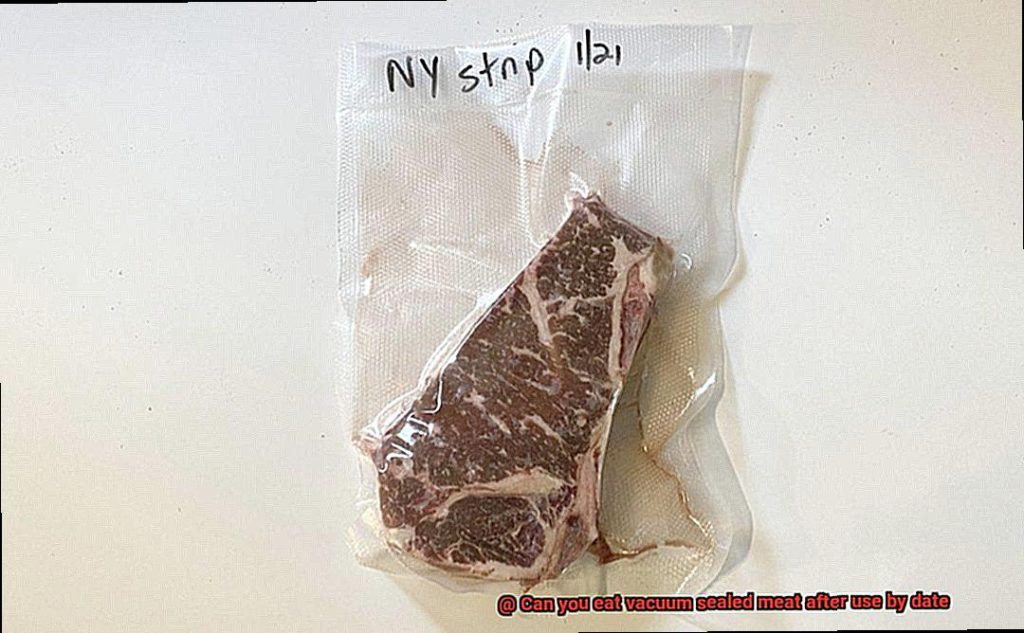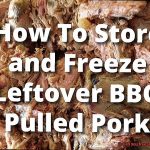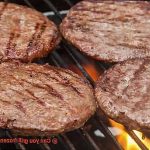Imagine this situation: you open your fridge, and your eyes land on a vacuum-sealed meat pack. You notice that the ‘use by’ date has already come and gone. Suddenly, questions start to flood your mind: Is it still safe to eat? Will it taste good? Can I take the risk?
Food safety is no joke, and we should always be vigilant when it comes to consuming food products. But what about vacuum-sealed meat? Many people believe that this type of packaging can keep meat fresh for longer periods, even after its expiration date. However, is this true?
In this blog post, we’ll explore the question ‘Can you eat vacuum-sealed meat after the use-by date?’ We’ll delve into what happens to meat when it’s vacuum-sealed, factors that affect its shelf life, and the potential risks of eating expired meat. We’ll also tackle some common misconceptions about vacuum-sealed meat and provide practical advice on how to handle and store it safely.
By the end of this post, you’ll have a clear idea of whether or not you should consume vacuum-sealed meat past its use-by date. So get ready to learn more about the world of vacuum-sealed meats and make informed decisions about your food choices.
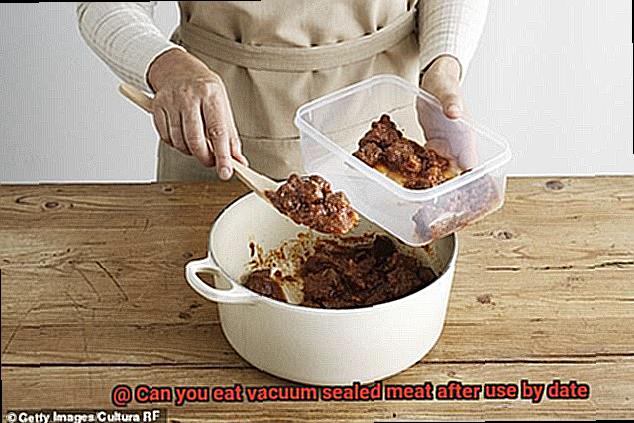
Contents
What is Vacuum Sealing?
Vacuum sealing is the ultimate food preservation method for keeping your food fresher for longer. This popular technique involves removing air from the packaging before sealing it using a vacuum sealer. The result is a package that is completely air-free and sealed tightly, preventing spoilage and freezer burn.
So, how does vacuum sealing work? By creating a low-oxygen environment, vacuum sealing inhibits the growth of bacteria and other microorganisms that cause food to spoil. This process helps to prevent oxidation and spoilage, making it an ideal method for preserving perishable foods like meat, vegetables, and fruits.
The benefits of vacuum sealing are numerous. Firstly, it extends the shelf life of food items up to three times longer than fresh food stored in the refrigerator. Secondly, it preserves the flavor and texture of food items, making them taste fresher for longer. Thirdly, it prevents freezer burn, which can affect the texture and taste of frozen foods. Lastly, vacuum-sealed packages take up less space than traditional storage methods, making them easier to store and transport.
It’s important to note that even vacuum-sealed meat has an expiration date, which is usually indicated on the packaging. Eating meat that has passed its use-by date could put you at risk of food poisoning, as harmful bacteria could have grown in the packaging.
How Does Vacuum Sealing Preserve Meat?
Vacuum sealing is a popular preservation method that can help extend the shelf life of your favorite cuts. But how exactly does it work?
Firstly, vacuum sealing involves removing the air from the packaging before sealing it. This creates a vacuum environment that inhibits the growth of bacteria and other microorganisms that cause food spoilage. Without oxygen present, bacteria cannot thrive and multiply, leaving your meat fresher for longer.
But wait, there’s more. Vacuum sealing also helps prevent freezer burn. Freezer burn occurs when moisture evaporates from the meat’s surface, leaving behind dry, discolored patches. The airtight seal created by vacuum sealing prevents moisture loss, maintaining the meat’s flavor and texture.
In summary, vacuum sealing acts like a time capsule for your meat. It can extend its shelf life by up to three times longer than fresh food stored in the refrigerator, preventing spoilage and freezer burn while maintaining its quality. However, it’s important to consume vacuum-sealed meat within a reasonable timeframe to avoid risking food poisoning.
So next time you’re at the grocery store stocking up on your favorite cuts of meat, consider vacuum sealing them for long-lasting freshness. Your taste buds (and wallet) will thank you.
To ensure optimal preservation of your vacuum-sealed meat, here are some additional tips:
What is the Use-By Date for Vacuum-Sealed Meat?
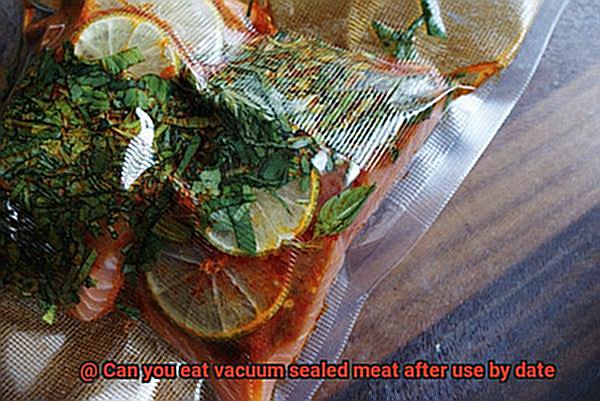
This date is the manufacturer’s recommendation for the last day that a product should be consumed. It considers several factors such as the meat type, packaging, and storage conditions. For vacuum-sealed meat, the use-by date is crucial as it is determined by the absence of oxygen in the packaging which inhibits bacterial growth.
Vacuum-sealing extends meat’s shelf life compared to non-vacuum-sealed meat. However, it doesn’t guarantee that it can be consumed past its use-by date. Eating meat that has passed its use-by date can cause foodborne illness which can lead to unpleasant symptoms like nausea, vomiting, and diarrhea. In severe cases, these symptoms could be life-threatening.
It is essential to always check the use-by date on vacuum-sealed meat before consumption. If the use-by date has passed, it’s best to discard the meat. It’s not worth risking your health by consuming meat that may be contaminated with harmful bacteria.
In summary, vacuum-sealed meat has a longer shelf life due to its packaging process, but it doesn’t mean that it can be consumed past its use-by date. Always check the use-by date on vacuum-sealed meat before consumption and dispose of it if it has passed. Your health and safety are paramount, and taking any risks isn’t worth it.
To ensure that you consume fresh and safe vacuum-sealed meat, consider the following tips:
- Check for damages or leaks in the packaging before purchase.
- Store vacuum-sealed meat in a refrigerator at 40°F or below.
- Avoid freezing vacuum-sealed meat if possible.
- Cook vacuum-sealed meat thoroughly before consumption.
Can You Eat Vacuum-Sealed Meat After the Use-By Date?
Well, as an expert in this field, let me tell you that it’s best not to take any chances when it comes to your health.
It’s important to understand that the use-by date is not just a suggestion, but rather a crucial guideline set by the manufacturer to guarantee optimal freshness and safety. Consuming vacuum-sealed meat after the use-by date can pose significant risks, including food poisoning and bacterial infections.
While vacuum-sealing meat can prolong its shelf life, it does not make it immune to spoilage. Bacteria can still thrive in a vacuum-sealed environment, especially if the seal is compromised or the meat has been exposed to varying temperatures.
So, what measures can you take to ensure the safety of vacuum-sealed meat? Firstly, it’s recommended that you consume it before the use-by date. However, if you do choose to eat meat past its use-by date, make sure to inspect it carefully for any signs of spoilage such as an off smell or slimy texture. If in doubt, don’t take any chances and throw it out.
To reiterate, consuming vacuum-sealed meat after its use-by date can result in potential health hazards, which is why it’s always better to be safe than sorry. Don’t compromise your well-being for a few extra days of consumption.
In summary, here are some key takeaways:
- The use-by date is a vital guideline set by manufacturers for optimal freshness and safety.
- Vacuum-sealing meat does not make it immune to spoilage.
- Consuming vacuum-sealed meat beyond its use-by date can pose several health risks.
- It is recommended that you consume vacuum-sealed meat before the use-by date.
- When in doubt, inspect the meat carefully for signs of spoilage and discard if necessary.
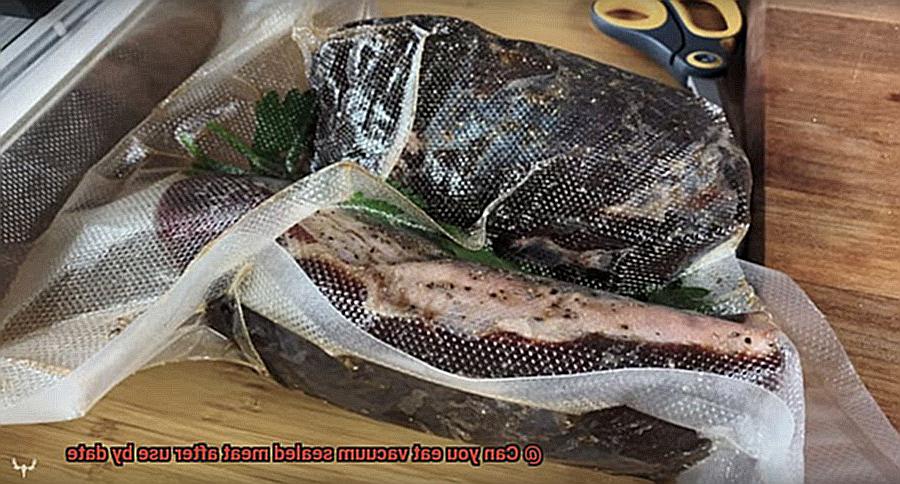
Exceptions to the Rule
There are exceptions to the rule when it comes to vacuum-sealed meat and its use-by date. Let’s explore these exceptions together and find out why they are safe for consumption.
Firstly, freezing meat can be a game-changer in terms of prolonging shelf life and preventing bacteria growth. If the meat was frozen before its expiration date, it may still be safe to consume even after the date has passed. But, it is crucial to ensure that it has been stored correctly in the freezer and hasn’t been thawed and refrozen multiple times, which can increase the risk of bacterial growth.
Another exception to the rule is High Pressure Processing (HPP). This process uses high pressure to kill bacteria and extend the shelf life of food products. Vacuum-sealed meat that has undergone HPP may still be safe to consume even after the use-by date has passed.
It is essential to remember that the use-by date is not always set in stone. It’s a guideline for when the product is at its peak freshness and quality. If the meat still looks and smells fresh, it may still be safe to consume even if the use-by date has passed. However, it’s crucial to use your own judgement and err on the side of caution when consuming expired food products.
The Risk of Eating Expired Meat
We all know the satisfaction of sinking our teeth into a perfectly cooked piece of meat, but have you considered the dangers of consuming expired meat? The risks associated with eating expired meat are not to be taken lightly, as they can be grave and even life-threatening.
Vacuum-sealing your meat may seem like a foolproof way to preserve it, but it’s important to bear in mind that this method only extends the shelf life. By removing oxygen from the packaging, vacuum-sealing slows down bacterial growth. However, it doesn’t eliminate the risk of bacterial growth entirely. If the meat has passed its use-by date, harmful bacteria such as salmonella, E. coli, or listeria may already be present, leading to severe foodborne illnesses.
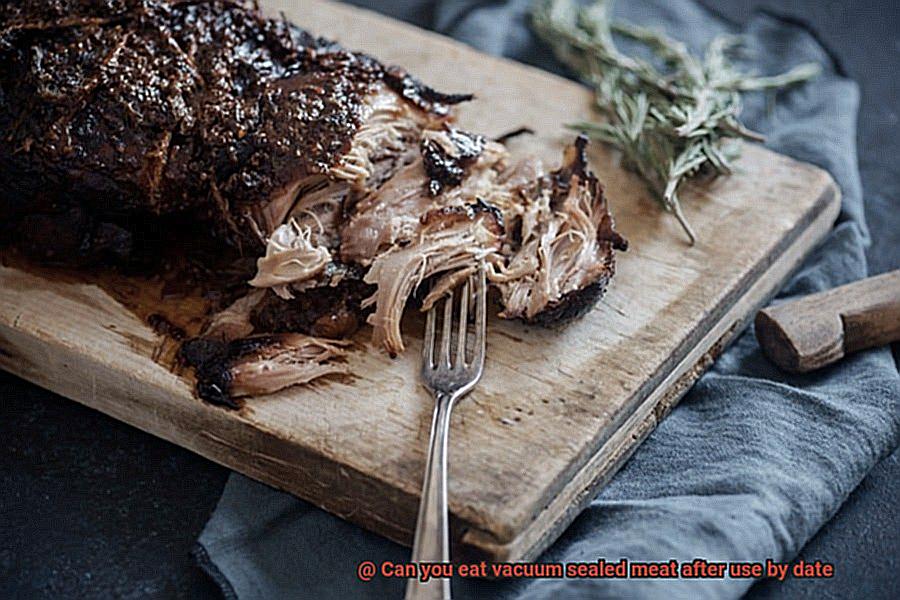
It’s also crucial to note that vacuum-sealed meat can spoil before its use-by date if it hasn’t been stored correctly. Damage or punctures in the packaging create openings for bacteria to enter and grow. Similarly, if the meat has been stored in a warm or humid environment, this also increases the risk of spoilage.
In summary, consuming expired meat is a perilous gamble. Even if your vacuum-sealed meat appears and smells fine beyond its use-by date, it’s better to err on the side of caution and avoid it altogether. Always check the use-by date and storage conditions closely to prevent foodborne illnesses. Here are a few tips to keep in mind:
- If you’re not going to consume vacuum-sealed meat within two weeks of purchase, freeze it.
- Store vacuum-sealed meat in the coldest part of your fridge.
- Check the packaging for any damage or punctures before storing.
- If you’re uncertain about whether your meat is safe to eat, don’t take any chances – discard it.
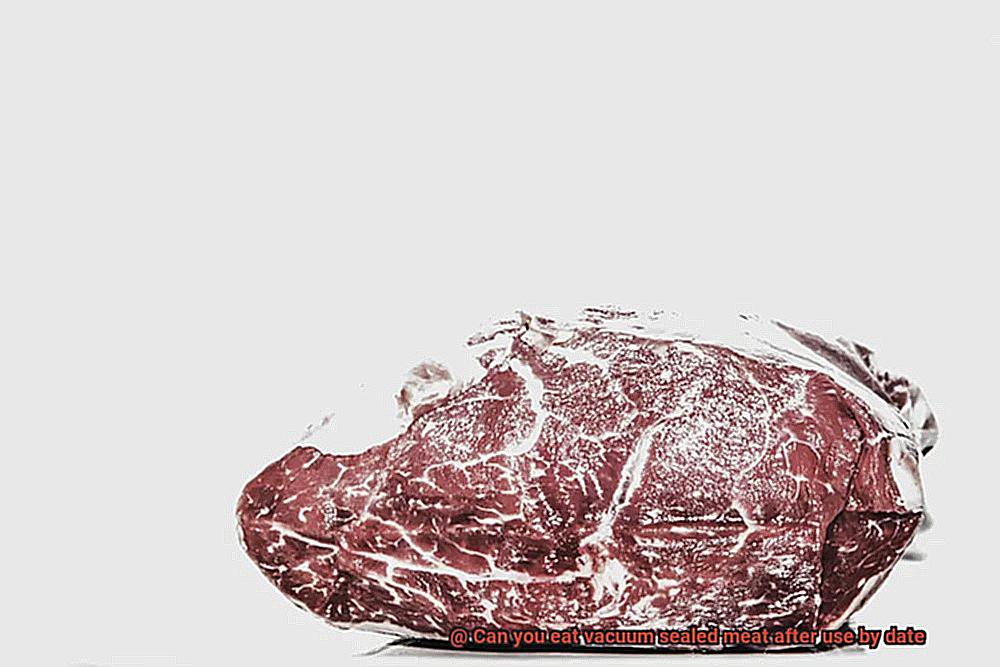
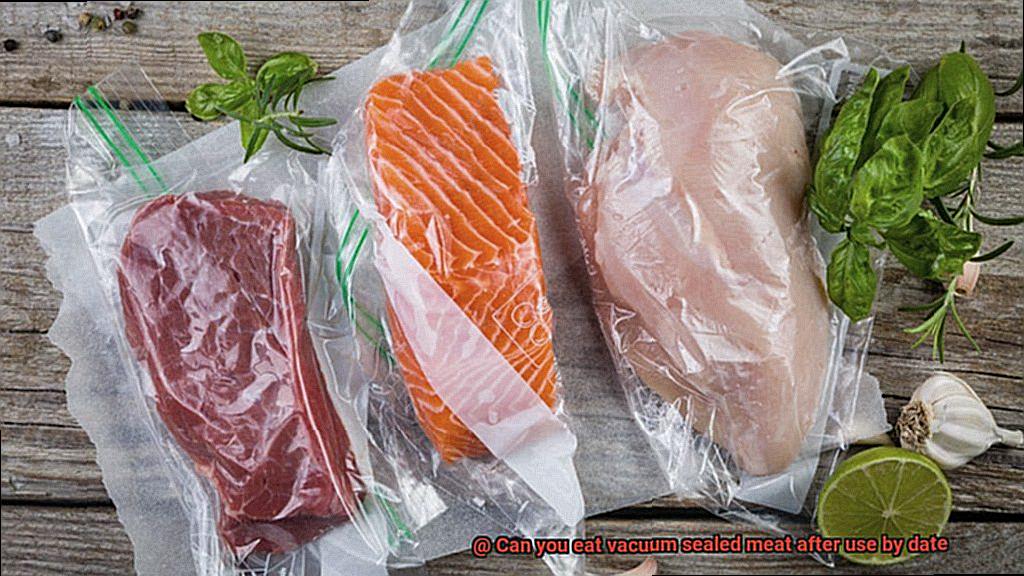
Freezing as an Alternative
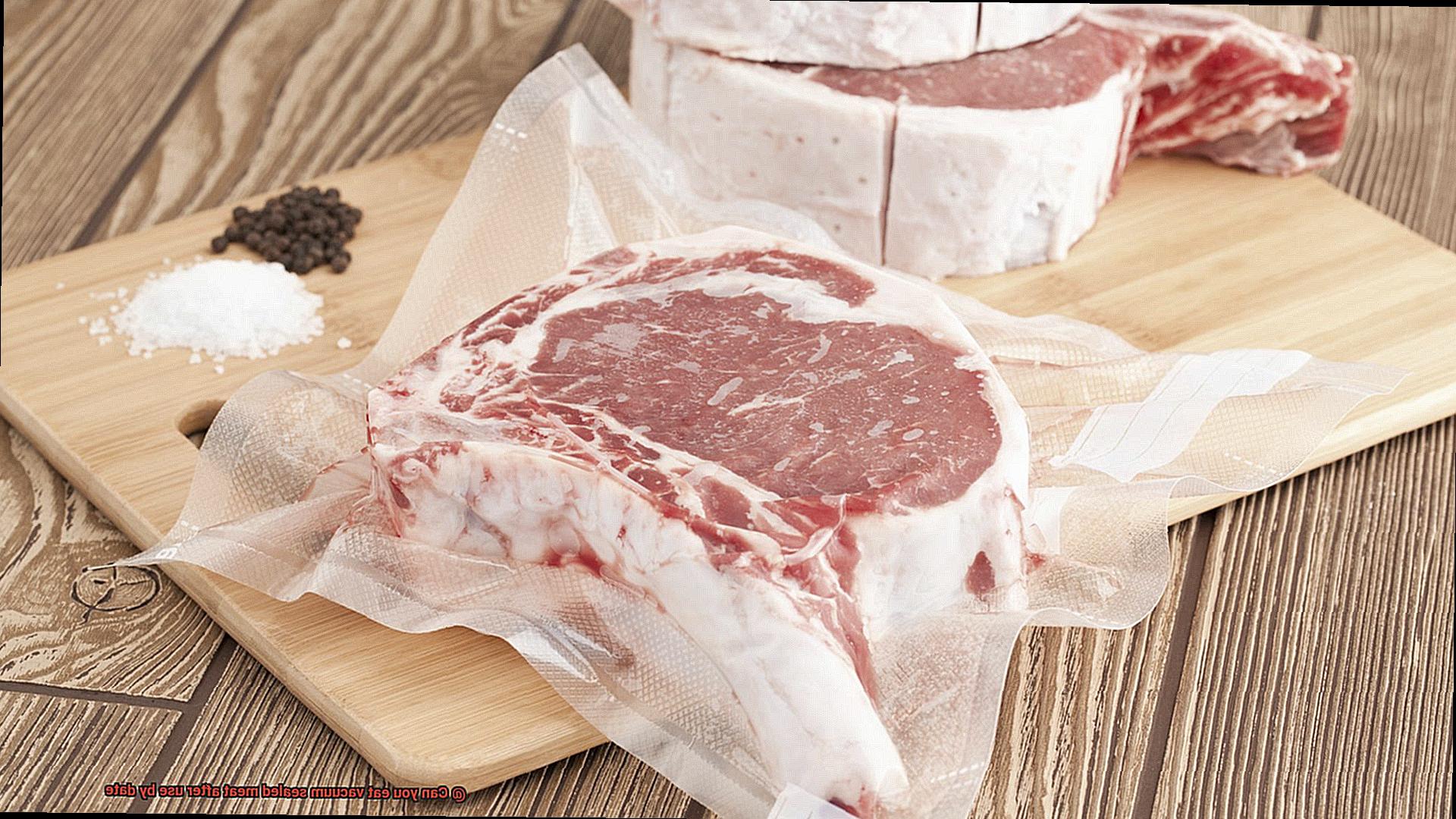
Freezing is a great alternative to consuming vacuum-sealed meat that has expired. The process of freezing meat can extend its shelf life by up to six months or even longer, depending on the type of meat and how it is stored.
However, before you start stashing your vacuum-sealed meat in the freezer, there are some important things to keep in mind. First and foremost, ensure that the packaging is airtight and free from any holes or tears. This is crucial in preventing freezer burn – a phenomenon that occurs when moisture is lost from the meat causing it to become dry and discolored. Freezer burn not only affects the taste and texture of the meat but also makes it less enjoyable to eat.
Once your meat is safely packaged, place it in the freezer at 0°F (-18°C) or lower. Don’t forget to label it with the date you froze it so that you don’t lose track of how long it’s been in there.
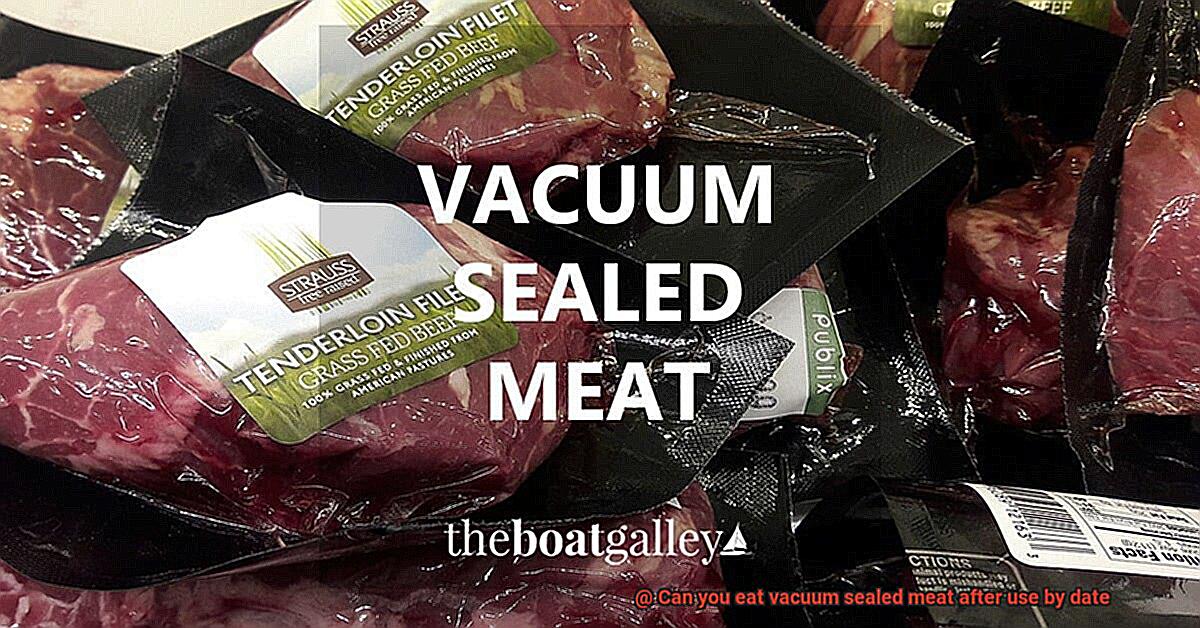
Now let’s talk about defrosting. The best way to defrost frozen meat is in the refrigerator allowing it to thaw slowly over several hours or overnight. This method helps maintain the quality of the meat while preventing harmful bacteria from growing. However, if you’re short on time, you can also defrost it in cold water or using a microwave. But be careful as these methods may not be as effective or safe.
It’s important to note that while frozen meat may still be safe to eat after its use-by date, its quality may deteriorate over time. Therefore, it’s always best to consume fresh meat whenever possible.
Practicing Good Food Hygiene
Food hygiene is an essential aspect of ensuring that the food we eat is safe and healthy. Proper storage, handling, and preparation of food, especially meat, are crucial in preventing food poisoning. When it comes to vacuum-sealed meat, following specific guidelines is necessary to guarantee its safety, even beyond the use-by date.
It’s important to understand that there’s a difference between the use-by and best-before dates. The former is a safety recommendation by the manufacturer on when to consume the product to avoid health risks. The latter refers to the period where the product will be at its best quality.
If you have vacuum-sealed meat beyond its use-by date, it may still be safe to consume if stored correctly. This means keeping it at a consistently cold temperature of below 5°C and away from heat sources or direct sunlight. However, you should inspect the meat thoroughly for any signs of spoilage, such as a slimy texture or an off smell. When in doubt, discard it.
It’s also important to handle vacuum-sealed meat with caution. Here are some tips:
- Wash your hands before and after handling raw meat.
- Use separate cutting boards and utensils for raw meat and other foods to prevent cross-contamination.
- Cook the meat to a safe internal temperature using a meat thermometer to kill bacteria that may be present.
By following these guidelines, you can ensure that your vacuum-sealed meat is safe to eat, and you avoid any potential health risks associated with improper handling.
-CtfELFUT-U” >
Conclusion
In conclusion, vacuum sealing is a fantastic way to keep your food fresh and extend its shelf life. However, it’s essential to understand that vacuum-sealed meat does have an expiration date and should never be consumed beyond it. Even though vacuum-sealing slows down bacterial growth, it doesn’t make the meat invincible to spoilage. If the packaging is damaged or exposed to fluctuating temperatures, harmful bacteria can still thrive in a vacuum-sealed environment.
To ensure optimal preservation of your vacuum-sealed meat, always check for leaks or damages in the packaging before purchasing it and store it in a refrigerator at 40°F or below. Freezing should be avoided if possible, but if you must freeze the meat, make sure that the packaging is airtight and free from any holes or tears. When defrosting frozen meat, use the refrigerator method for best results.
Maintaining good food hygiene is crucial in preventing food poisoning while handling vacuum-sealed meat. Always wash your hands before and after handling raw meat, use separate cutting boards and utensils for raw meat and other foods to prevent cross-contamination, and cook the meat to a safe internal temperature using a reliable meat thermometer.
Bear in mind that consuming expired vacuum-sealed meat can pose several health risks such as food poisoning and bacterial infections. It’s always better to play safe when it comes to your health and well-being.

